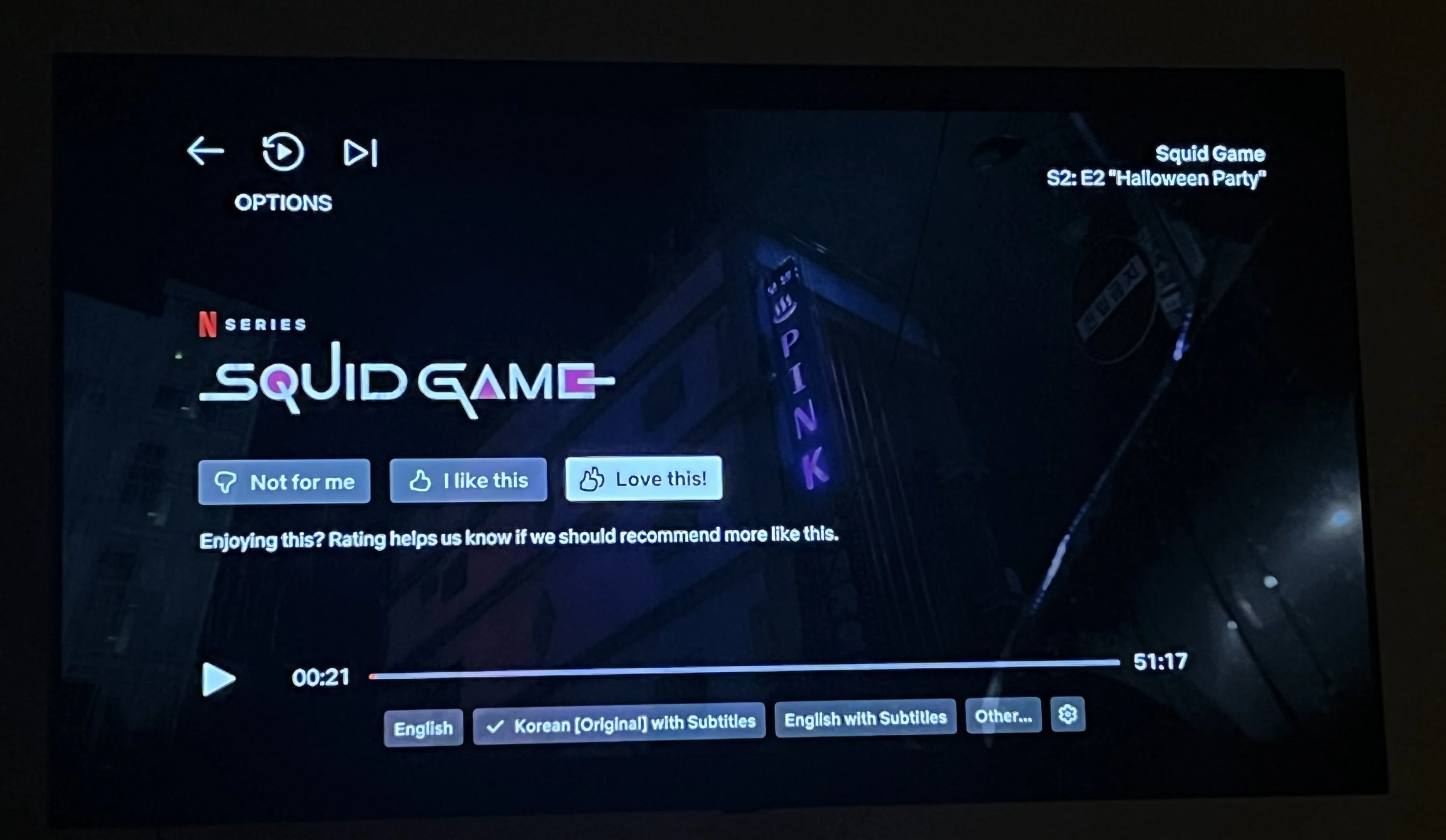Like being asked to high-five someone at a funeral
Last week, I found myself in an oddly uncomfortable position after watching the latest episode of Squid Game. The episode featured two scenes involving Russian roulette that left my wife and me sitting in silence as the credits rolled.
Then came Netflix's rating prompt: "Not for me," "Like this," or "Love this!"
I couldn't help but notice the disconnect. Did I enjoy the episode? Yes. Would I watch the next one? Probably.
But something felt off about clicking "Love this!" with a cheerful double thumbs-up after watching such haunting content.
It was like being asked to high-five someone at a funeral – technically possible, but emotionally inappropriate.
The moment perfectly illustrates a crucial yet often overlooked aspect of survey design: psychological context. Good surveys don't just collect data; they speak to respondents' emotional state.
Instead of "Love this!", I imagined options that acknowledged my experience: "I need a breather before the next episode" or "I’m already queuing up the next one."
Of course, Netflix is renowned for anticipating what their users like. It can simply track actual viewing behavior to see if my wife and I continue watching or not.
But the principle here extends beyond streaming services. When you design a survey, ask yourself: Are you meeting respondents where they are emotionally, or are you forcing them to translate their complex experiences into ill-fitting categories?
Sometimes, the most revealing insights come from those moments when we find ourselves hesitating over a response option, wondering why none of the choices quite fit how we feel.
Remember the Squid Game moment. Respondents aren't just data points – they're humans processing experiences. Design accordingly.
Speaking of survey design -- consider booking a Survey Roast.
Send me your survey draft, and for $145, I'll make a 15-minute Loom video with copy-and-paste edits and suggestions that can improve your survey data quality.
Cheers,
Sam


